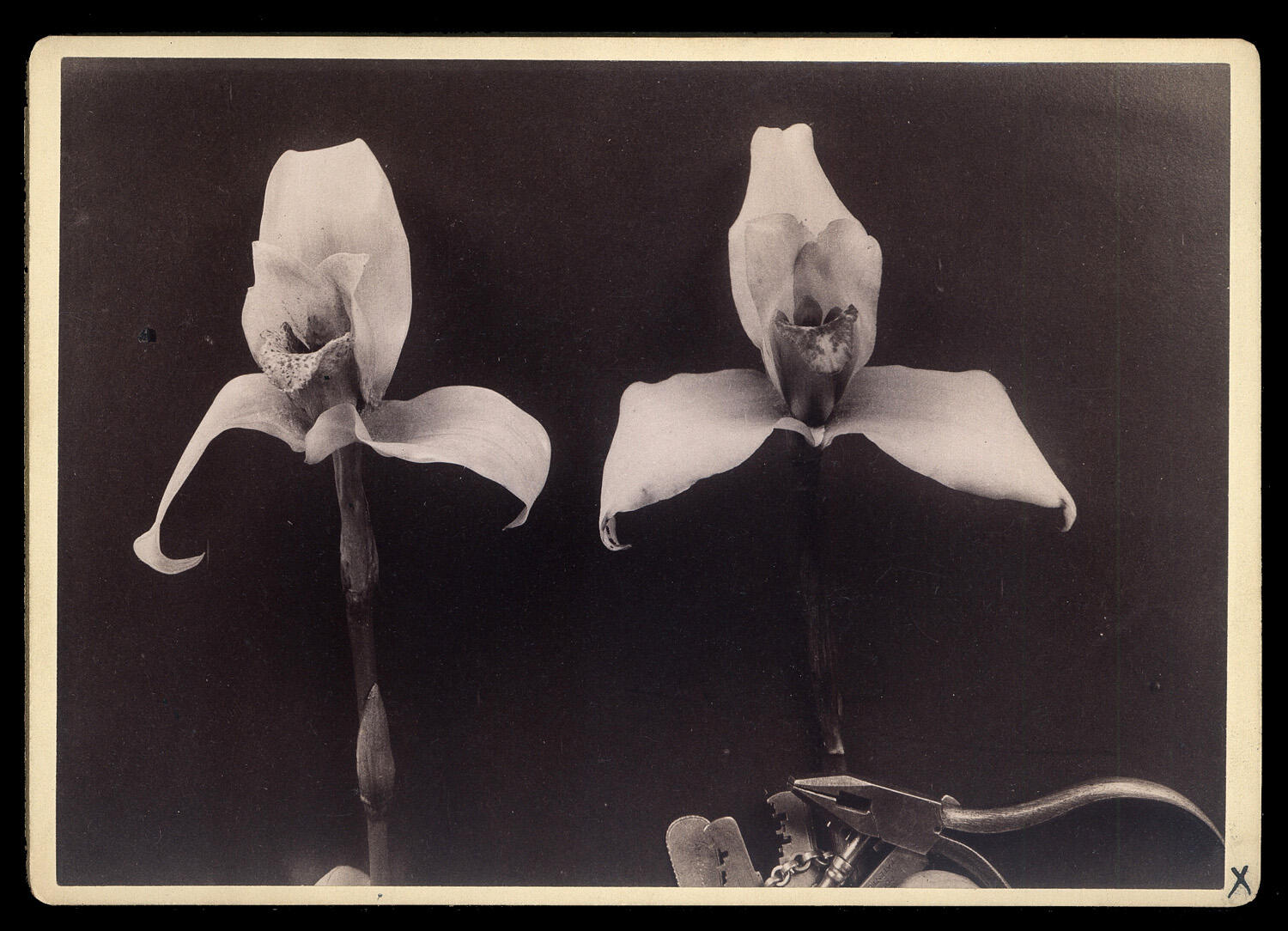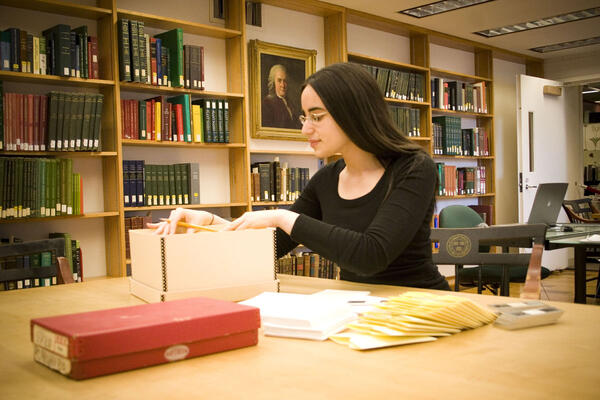Blaschka Processing Exhibit
An online exhibit about processing the Archives of Rudolf and Leopold Blaschka and the Ware Collection of Blaschka Glass Models of Plants.
Archival Photographic Collections
The Harvard University Botany Libraries Archives are rich in historical and intellectual materials. A vast amount of beautiful and unique images are available to view and study, as well as written material including journals, field notes, and diaries of botanists. The images shown here are cyanotypes which were made from glass plate negatives in the mid 1800s. They are examples of some of the diverse materials found in the Blaschka photographic collection.


Other Series
There are a number of series waiting to be processed in the Harvard University Botany Library Archives. Time and staffing restrictions keep these from being processed quickly, but work is continually done with them. Some of the images shown below are examples of loose materials which remain unidentified and labeled. As time progresses, these materials will be arranged and housed in their proper place and made available to researchers.




Photographic Archives
The Blaschka photographic collection contains a wide range of beautiful and interesting materials. These materials had not been accessed for some time, and so the archivists began with a number of large boxes overflowing with photographic prints, slides, negatives, and other materials. Original order was noted, but as the boxes had been rearranged so many times while waiting to be processed the order was not especially important. An inventory was taken of the materials in the boxes, and it was discovered that they contained a number of photographic prints, glass plate negatives, cyanotypes, glass stereo slides, 35mm slides and negatives, and other various photographic materials. All of these needed to be identified, cleaned, re-housed and arranged. Because there were so many material types, a simple approach to organizing them was to create large folders under the Latin name of each plant specimen, and to put all of the corresponding materials into each. The potential difficulty with this was in protecting the different materials from each another, such as housing a glass plate negative next to a glass stereo slide without damaging either. However, care was taken with each item and as the folders are being put together each piece is safely protected in its space.
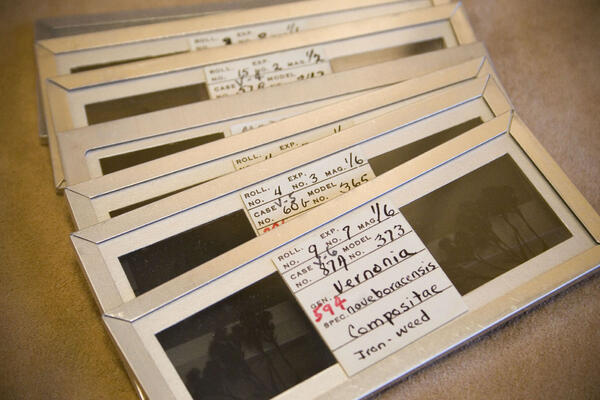
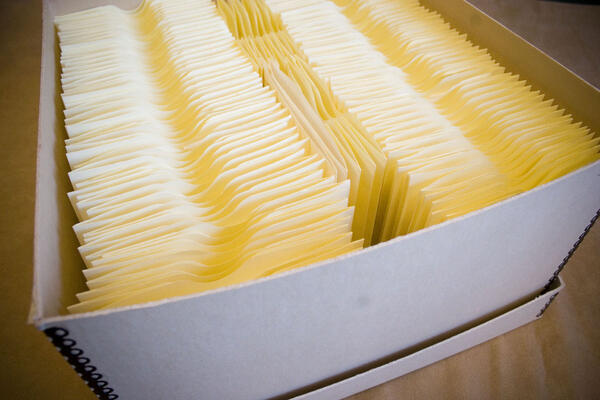
Processing A Collection
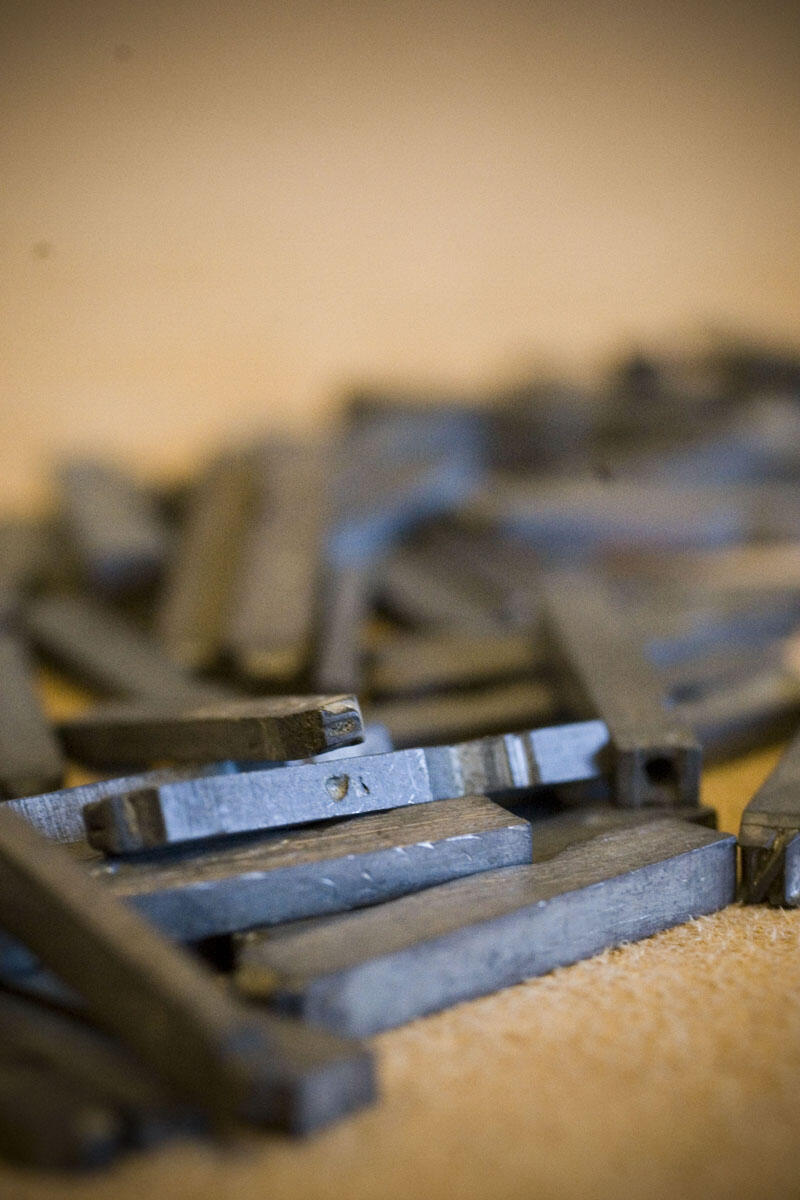
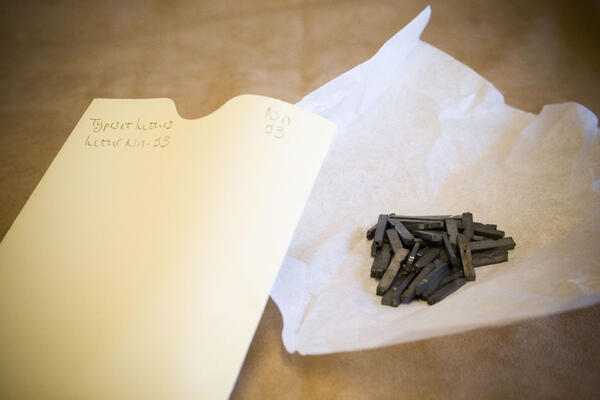

Use of the Archives
The Harvard University Botany Libraries Archives are here for all researchers to use. There are many curious items to be found in the photographic collection, all of which will be described in the finding aid being created for online use. Anyone from the public who wishes to view these wonderful items is welcome to arrange an appointment to visit the archives. Our hope is that everyone, from researchers to students to anyone with a curious mind will find a way to benefit from our unique collections. They are especially interesting for those who have an interest in botany, natural history, bibliographic history, art and photography. All are welcome, so please send questions, comments and requests our way!
